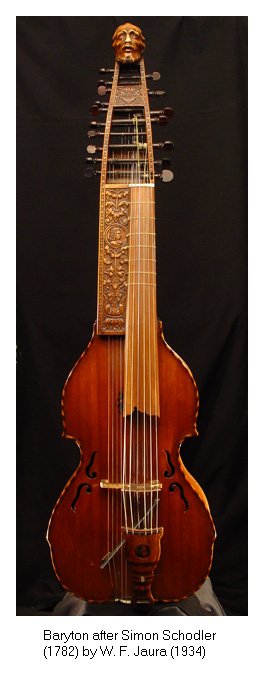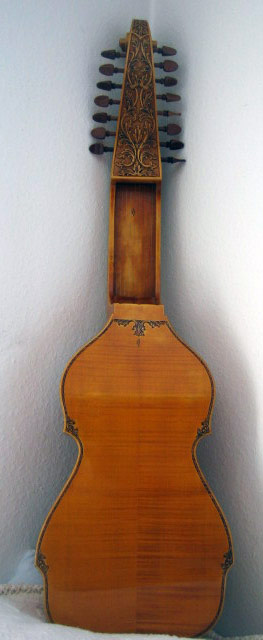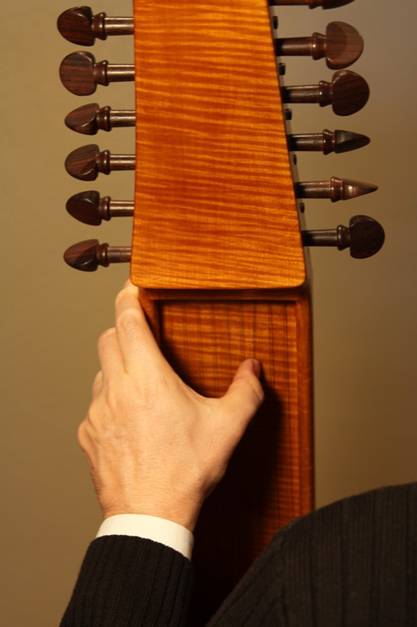



| The baryton is a bowed string instrument
similar to the viol, but distinguished by an extra set of plucked strings.
It was in regular use in Europe until the end of the 18th century. The baryton can be viewed as a sort of augmented bass viol. It is similar in size to the latter instrument, and likewise has six or seven strings of gut (typically D G C E A D, although scordatura was used), arranged over a fretted fingerboard and played with a bow. The instrument is held vertically and is supported by the player's legs (rather than with an end-pin as in the modern cello). The baryton differs from the bass viol in having an additional set of wire strings. These perform two functions: they vibrate sympathetically with the bowed strings, enriching the tone, and they can also be plucked by the left thumb of the performer, creating a contrasting tonal quality. The bowed strings are placed on the right, where they can be easily fingered by the player's left hand. The plucked strings are on the left, and are reachable by the player's thumb from the rear, where the back of the instrument's neck is left open.
The instrument probably originated in England in the early 17th century when the characteristics of two instruments, the viola da gamba. The instrument was never particularly popular, but it acquired a certain cachet in courtly circles, particularly in south Germany and Austria. The compositions for the instrument by Haydn and his students and colleagues represented a last hurrah for the baryton. By the early 19th century, it had gone out of style and ceased to attract new compositions. The Haydn-era baryton was different from earlier versions in a crucial respect: the sympathetic strings were tuned a full octave higher than previously. This helped the baryton to stand out from the other instruments (viola, cello) in the baryton trio, the primary form in which Haydn wrote. Since the Haydn oeuvre tends to dominate the field today, the Haydn-type tuning has become the standard. The baryton was completely neglected in the nineteenth century,
but in the twentieth, with the rise of the authentic performance movement
in classical music, new barytons were built and played. Initially, these
instruments were heavily constructed, more in the manner of a cello than
a bass viol (they were thus sometimes called "cellitons"), but as with the
parallel history of the harpsichord revival, eventually lighter instruments
were constructed that more closely followed their historical antecedents. Of the repertoire for this instrument, the best known works
are the 175 compositions written by Joseph Haydn for his patron, Prince Nikolaus
Esterházy, who enjoyed playing this instrument. Of these, 126 are trios
for viola, cello and baryton. They were written in the earlier part of Haydn's
career, from 1762 to 1775.
|
